New York is full of amazing skyscrapers and wonderful attractions. A huge complex of structures was built by one of the most powerful families in American history.
In this post, you’ll discover the ultimate list of facts about Rockefeller Center, an incredible complex of NYC buildings in the heart of Manhattan.
1. The land was originally bought for less than $5,000
In the early 19th century, the land that now houses the Rockefeller Center was a rural area. It was still about 3.5 miles (5.6 km) outside of what was then the city limit.
The land was purchased for $4,800 in 1801 from the city of New York by the local physician David Hosack. $4,800 back then is the equivalent of nearly $100,000 today.

2. The land was turned into a botanical garden
Apart from being a reputable physician, David Hosack was also an educator and a botanist. The latter made him decide to purchase the 19.75 acres (8.0 ha) of “common lands,” which was a rural area outside of the city of New York, and turn it into a botanical garden.
The goal was simple: He wanted to collect and cultivate plants that were growing in the United States and which had medical benefits. By 1805 he managed to grow over 1,500 species in the garden he named the “Elgin Botanic Garden.”
As you can see from the painting of the Elgin Botanical Garden below, the area which is now home to Rockefeller Center was indeed a rural area suited for this purpose.

3. Columbia University got the land for free
By 1808, David Hosack had run out of money to maintain the immense garden and offered the land up for sale. He pleaded for the botanical gardens to be continued and used for medical schools all around New York.
He was finally able to sell it in 1810, even though he made a loss of about $28,000 on the endeavor. The land was eventually given away to the University of Columbia.

Unfortunately, the University had no ears for the costly plans of Hosack to maintain the garden, and it was rented out to numerous individuals starting in 1817. The gardens stopped being maintained and by 1823 fell into utter decay.
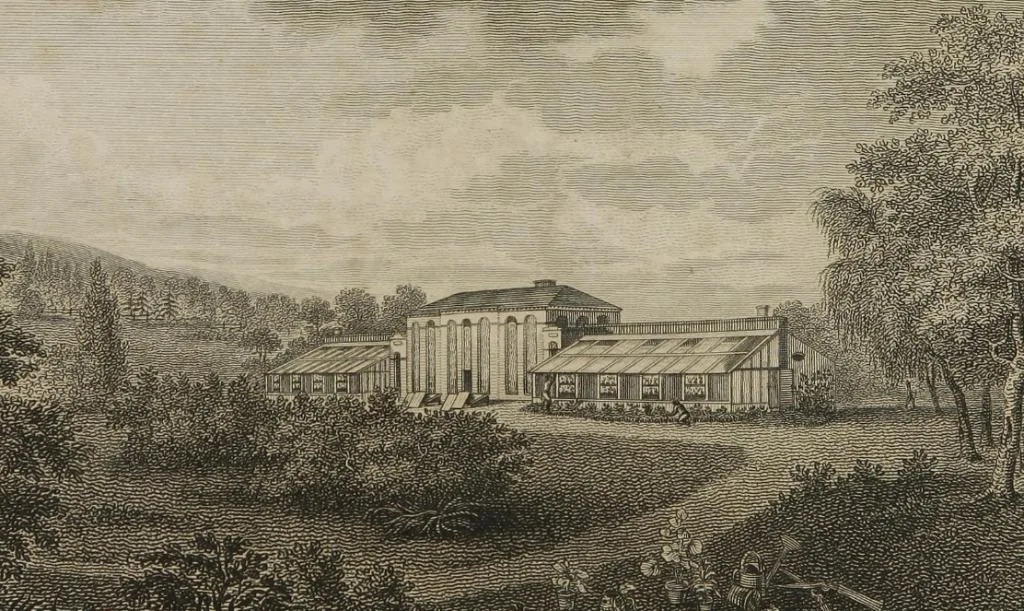
4. It became a shady neighborhood
The land, which was owned by the Columbia University who rented it out, came to be known as the “Columbia Upper Estate.”
As the city expanded north, a residential neighborhood was built, and by 1879, about 12 of the 19.75 acres were developed. This new neighborhood consisted of 298 rowhouses in the typical 19th-century style.
By the 1920s, the area was bordering the New York Theater district which was infamous for its nightlife. This resulted in the area deteriorating into a place full of boarding houses, nightclubs, and shady bars.
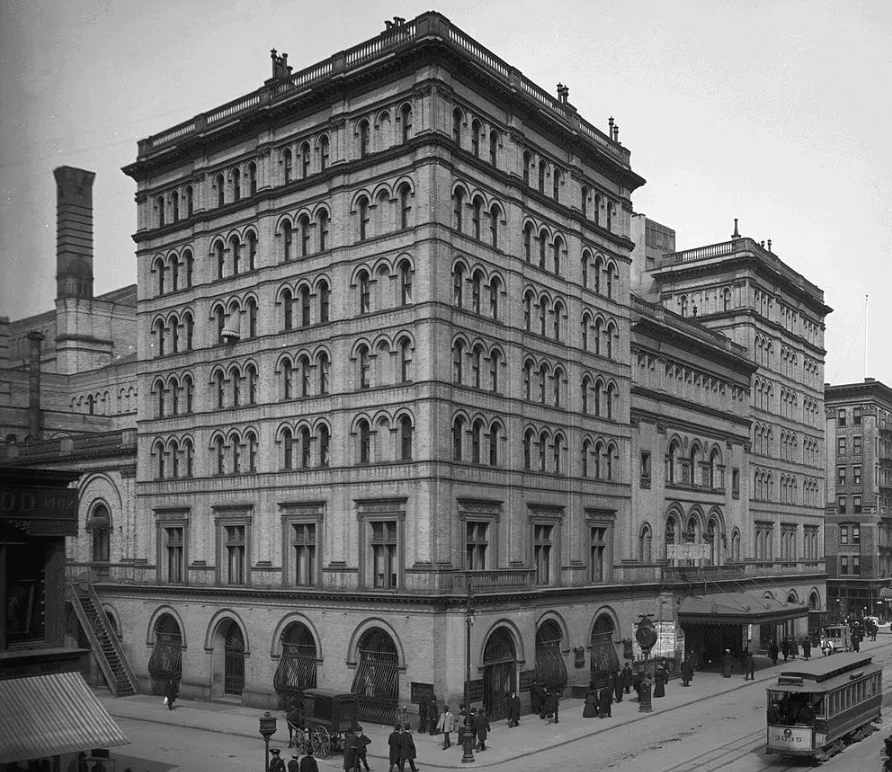
5. The initial plan was to build an opera house, with some help
By 1926, the company operating the Metropolitan Opera decided to look for a new location for the “Old Met,” the opera house located near the location of the Rockefeller Center. This means that the Rockefeller Center originally came up as a plan to replace the Old Met.
The cost of building a new opera house was too high for the Metropolitan Opera, so they asked the help of John D. Rockefeller Jr. (who was one of the richest men in America at this time). Columbia University leased the land to him for 87 years for $3 million per year.
Shortly after, numerous architectural firms were hired to come up with a plan for the “New Met.”
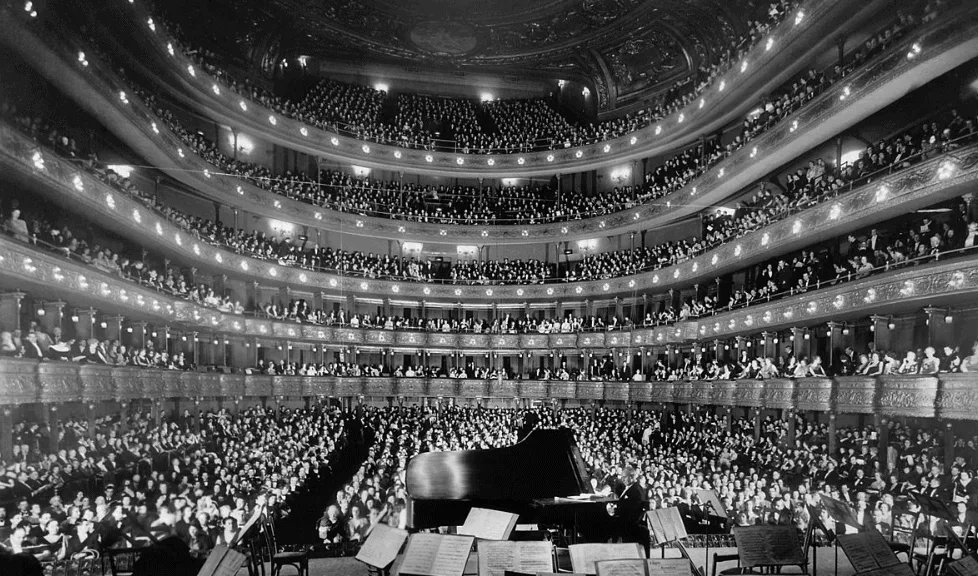
6. Plans for a new opera house were abandoned
In September 1929, the worst economic crash in American History happened, which resulted in the Great Depression.
Shortly after this devastating event, it became clear that the Metropolitan Opera wasn’t capable of moving anymore shortly after and plans to build a new opera house were dropped on December 6, 1929.
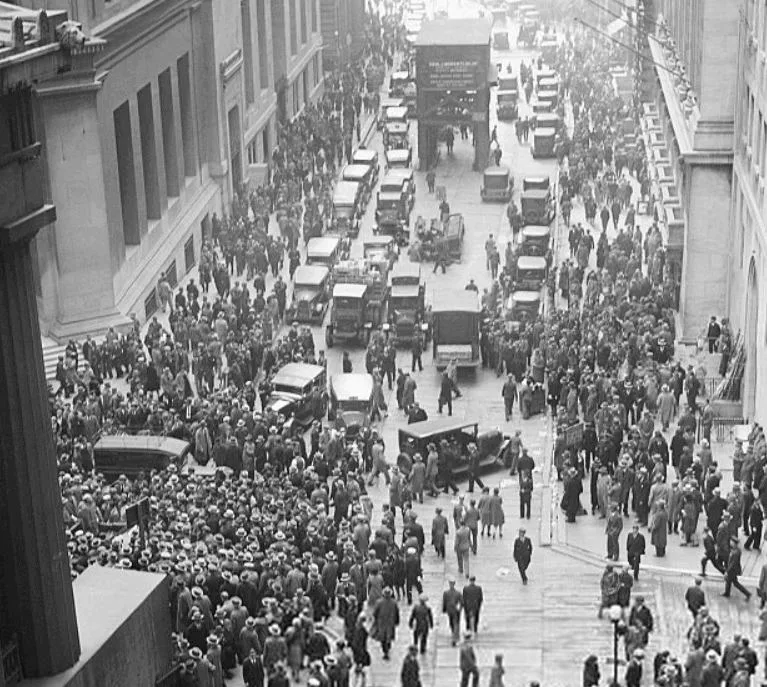
7. New plans were intended to make a profit
You don’t become one of the richest men in America by not thinking about profits. That’s exactly what John D. Rockefeller Jr. was thinking about when the original plan to build the New Met was abandoned.
One of the first ideas was to turn the site into a mass media complex, so talks with Radio Corporation of America (RCA) and its subsidiaries, National Broadcasting Company (NBC) and Radio-Keith-Orpheum (RKO) were started. This resulted in a deal in May 1930.
Additional plans which were included in the overall construction plan included facilities for:
- Television.
- Music.
- Radio.
- Talking pictures and plays.
- 4 theaters.
- 4 small retail buildings.
- Rooftop gardens.
- A recessed central plaza.
- A 41-story tower, comprising the current International Complex.

8. Rockefeller Center used to have another name
During the planning phase, the complex had been given several names. These included “Radio City,” “Rockefeller City,” and “Metropolitan Square.”
The most important thing for John D. Rockefeller Jr., however, was to turn the project into profits as quickly as possible.
Even though he didn’t like the idea of giving his name to the project, he agreed the moment it became clear that it would tremendously benefit the promotion of the rental spaces that would become available. The name “Rockefeller Center” became official in December 1931.
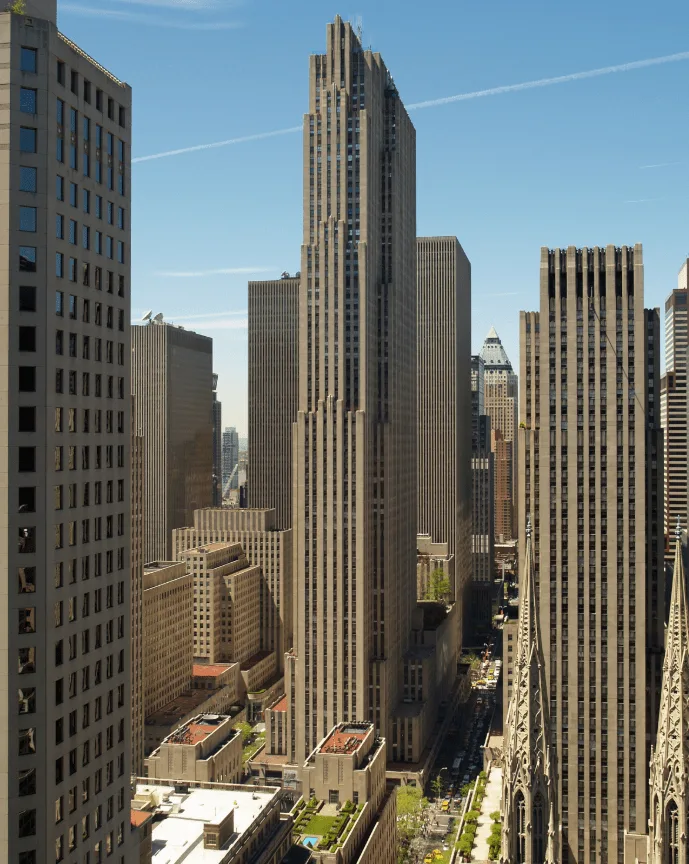
9. Construction started quickly but didn’t go smooth initially
While planning was going on, there were still about 4,000 tenants living in the deteriorated neighborhood just north of the New York Theater District.
As soon as the plans were ready and the paperwork was official, construction started. It wasn’t easy to relocate these people who were still living in the 228 buildings that were located on the site.
Most of the tenants were bought out by August 1931, but there were still people on the western and southeastern edges of the plot who refused to leave their property.
Regardless, the construction started and the initial buildings of the Rockefeller Center were built around the buildings these people lived in.
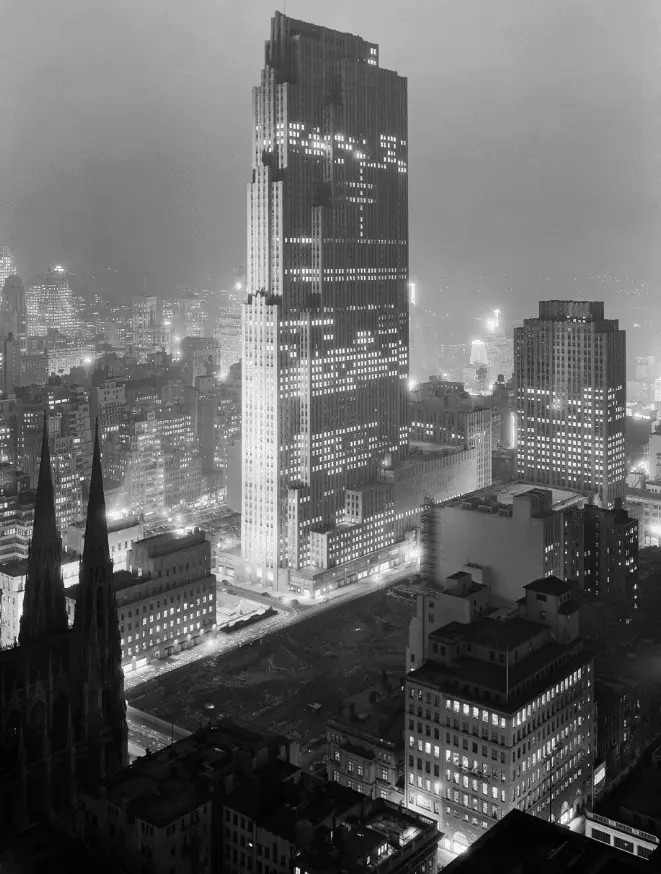
10. The original construction was completed in 1940
Most of the smaller buildings were already completed by 1935 and the final three buildings’ construction started in 1936.
Rockefeller Center was officially completed on November 2, 1940, as John D. Rockefeller Jr. himself installed the building’s ceremonial final rivet a day earlier. and was the largest private project undertaken during the Great Depression, a pretty remarkable notion.

11. Rockefeller Center became profitable very fast
Before the Center was officially completed, the complex already had 26,000 tenants and 125,000 daily visitors. Over a million people visited went on a guided tour of Rockefeller Center or visited the RCA Building’s observation deck that very year and millions of people visited the shopping mall or saw a performance.
These amazing numbers ensured that the Center was able to make a profit just one year after it was officially completed, allowing the owners to pay back the $39 million debt the project had accumulated by the early 1940s.
12. The war only caused minor problems for Rockefeller Center
Even though Rockefeller Center was seriously affected by the war, it didn’t really stop it from growing its profits.
The year the war broke out, 87% of the buildings were rented out and the first year after the war broke out, just about all rental space was leased. Rockefeller Center became so popular that a waiting list was created with potential tenants.
By the mid-1940s, there were over 400 companies on that waiting list and about 1,000,000 square feet (93,000 sqm) of space would have been needed to house all the prospective tenants.
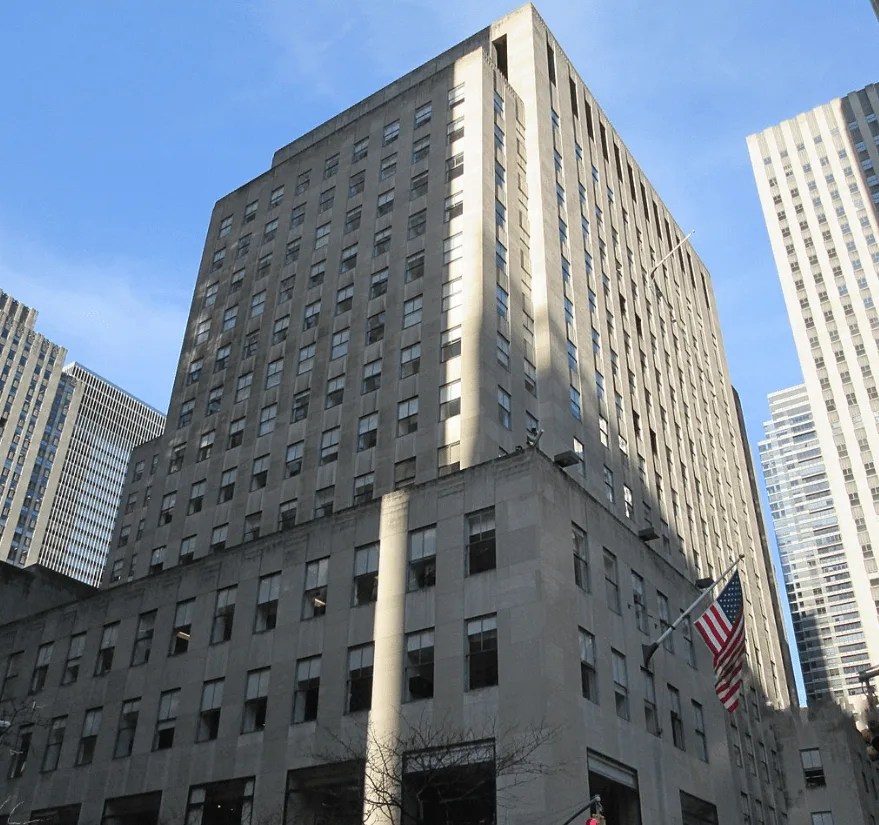
13. New buildings were planned during the war
Just about all private construction projects had been stopped or abandoned during World War II. Rockefeller Center, however, was such a big success that the first plans to expand were made during the war in 1943.
The first building of the expansion was requested by a company that was renting office space and wanted to expand. Esso (later renamed “Exxon”) was approved to build a new tower that was completed in 1947. The building is now known as 75 Rockefeller Plaza.
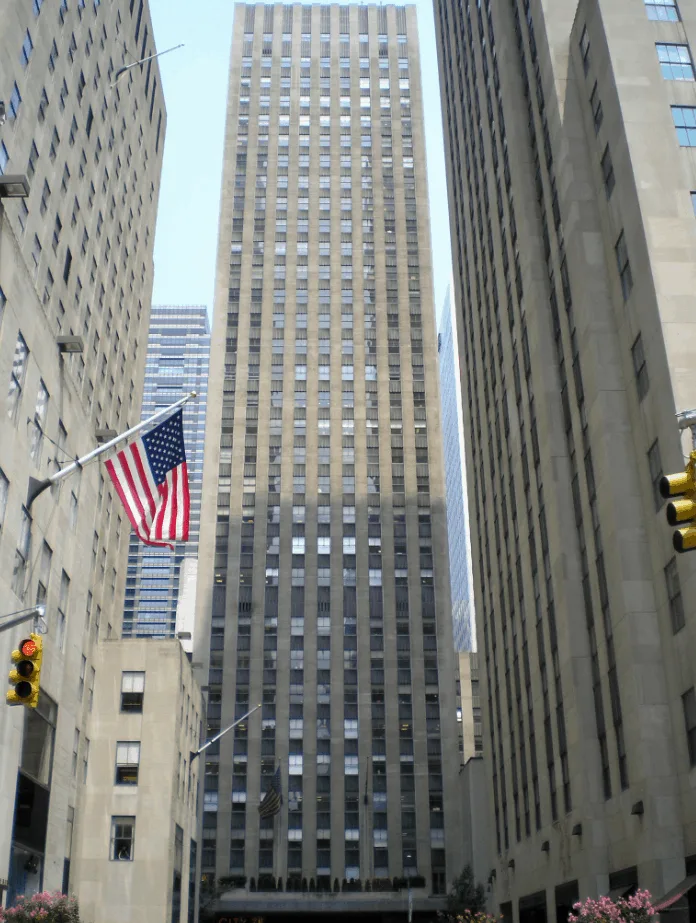
14. Rockefeller Center was continuously expanded
New buildings were continuously constructed up until the 1970s. The final buildings were 3 towers called the Exxon Building, the McGraw-Hill Building, and the Celanese Building.
Apart from these final additions, all the buildings in the buildings have undergone serious renovations.
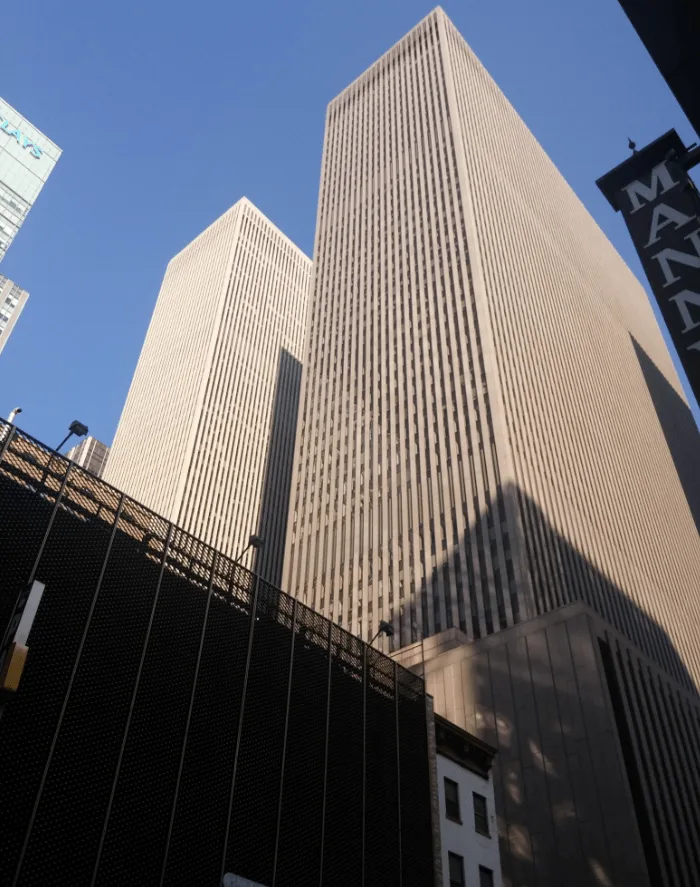
15. Columbia University earned $400 million
By the 1970s, Rockefeller Center Inc. (now Rockefeller Group) managed to lower the lease payment to Columbia University to $11 million. By 1972, it was running out of funds for its budget.
After renting out the land for half a century, Columbia University sold the land it owned to Rockefeller Center Inc. for $400 million in 1985.
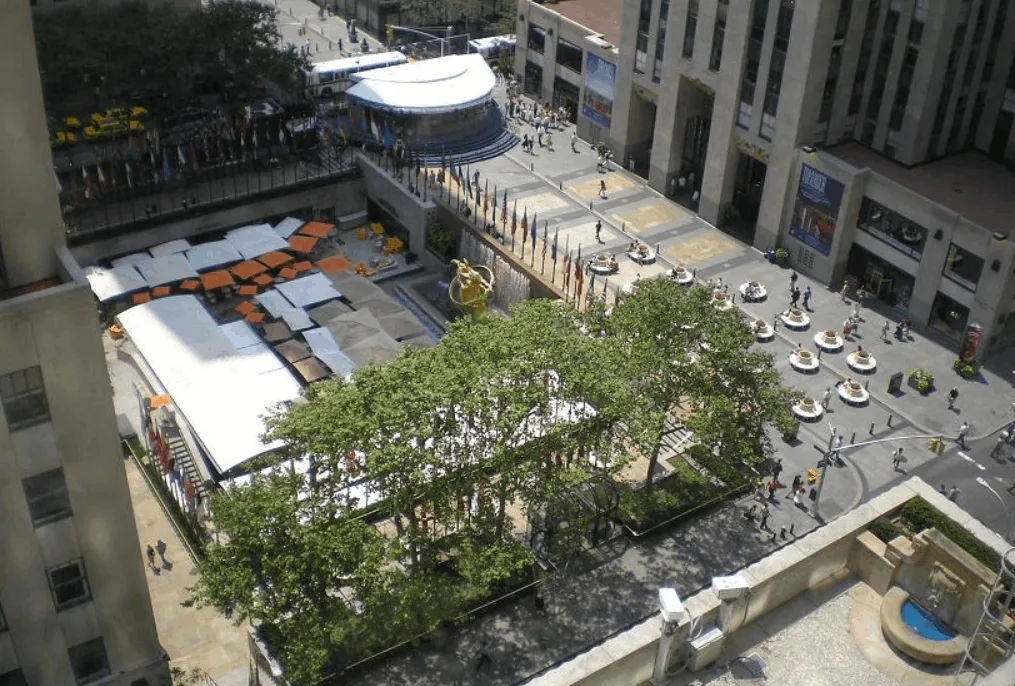
16. An art program was created for Rockefeller Center
The leading developers suggested a program for placing distinctive artworks within each of the buildings. Hartley Burr Alexander, a noted mythology and symbology professor, was hired to integrate this complex program into the buildings.
The program included a variety of sculptures, statues, murals, friezes, decorative fountains, and mosaics. Additionally, the program also included rooftop gardens that would resemble the ancient hanging gardens of Babylon.
As part of the program, a couple of artworks were commissioned as well, including the following:
Prometheus
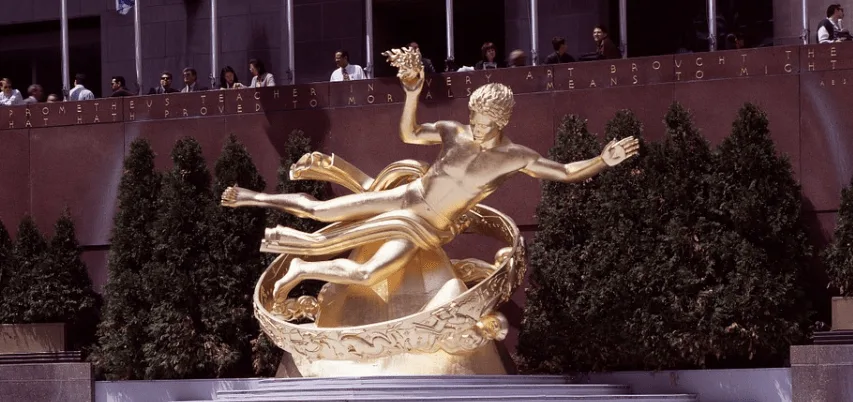
The bronze gilded Prometheus statue was commissioned in 1934 and created by Paul Manship. It is located at the western end of the sunken plaza.
Atlas
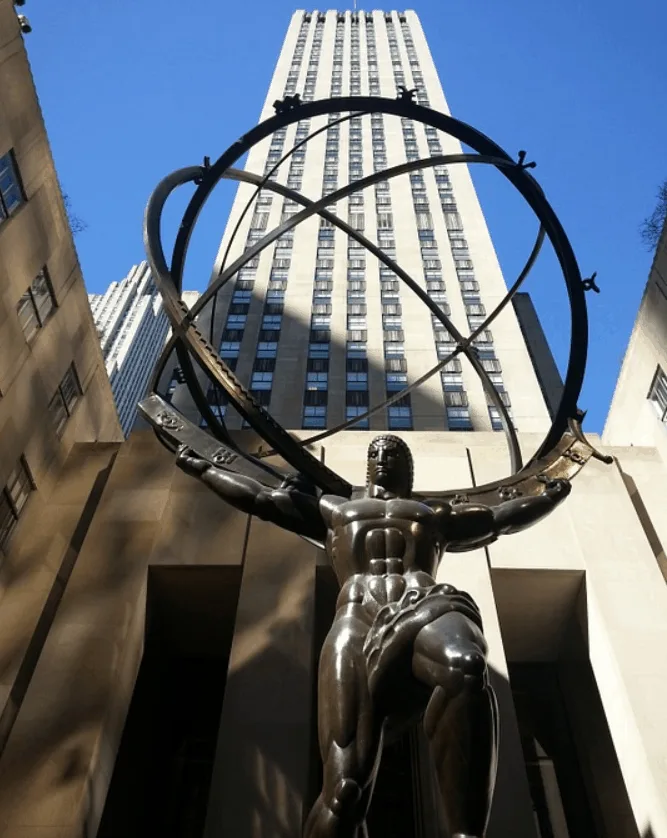
The Atlas statue was commissioned in 1936 and was created by Lee Lawrie and Rene Chambellan. It is located in the International Building’s courtyard.
17. Overview of main buildings and entertainment venues
Rockefeller Center is a complex consisting out of numerous buildings, most of which are office spaces for companies. Below are some of the most interesting buildings and entertainment venues:
Radio City
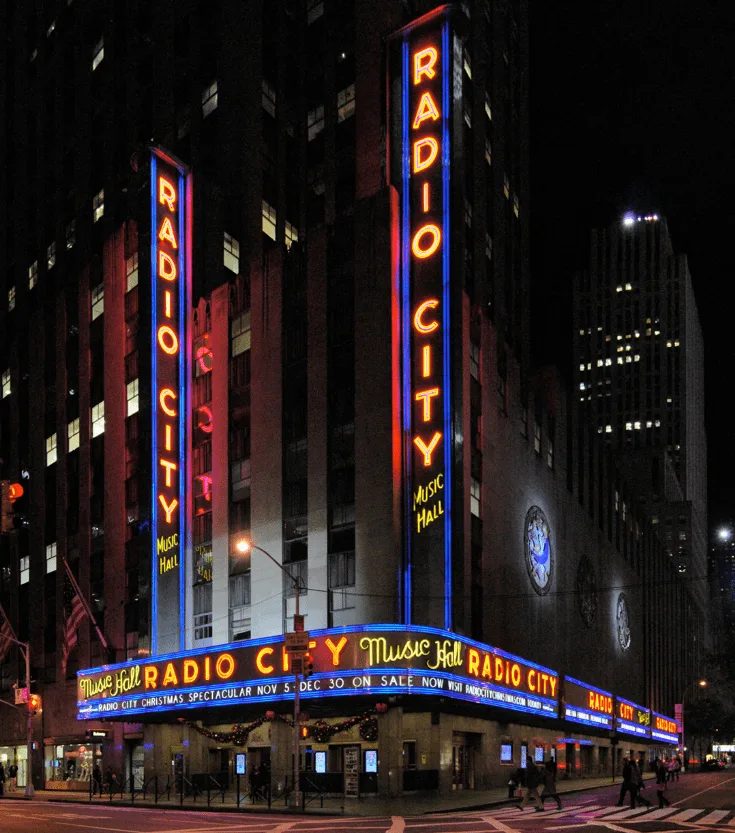
Radio City is one of the main entertainment venues of Rockefeller Plaza. It’s nicknamed “The Showplace of The Nation” and includes the 5,960-seat theater called the “Music Hall.”
International Complex
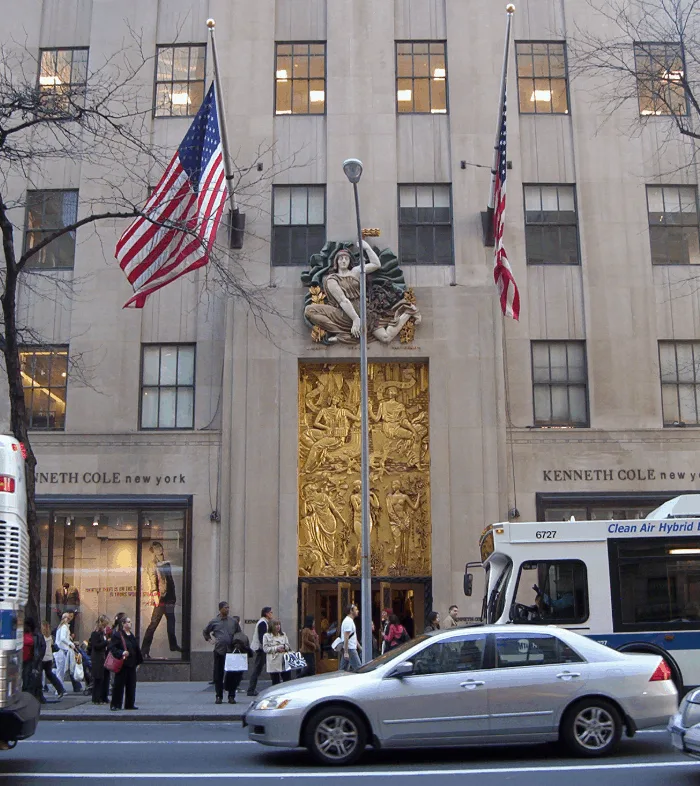
The International Complex consists of one big tower and 4 smaller country-themed buildings and was solely intended to be rented out to international tenants. The buildings house various retail outlets.
Ice Rink

The Ice Rink at Rockefeller Center was installed in 1936 after retail outlets of the original plan failed to get traction. It was initially seen as something temporary but became an instant tourist attraction so it was decided to keep it in the plaza permanently and has since become one of the most famous Ice Skating Rinks in the world.
The Rockefeller Center Christmas Tree
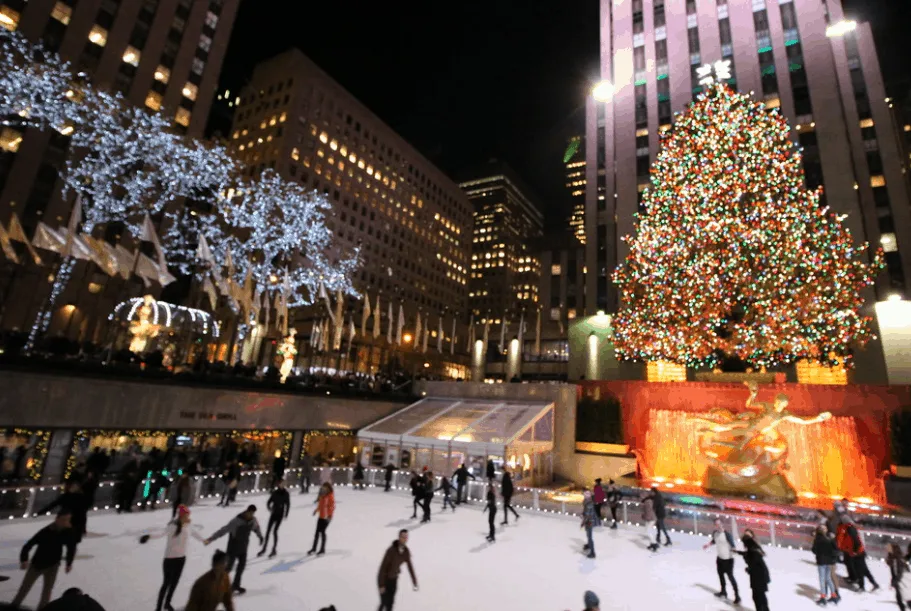
The Christmas Tree is placed above the statue of Prometheus every year in mid-November and lit in a public ceremony which is broadcast live to hundreds of millions of people worldwide. An estimated 125 million people visit the Christmas tree every year.
Rockefeller Plaza
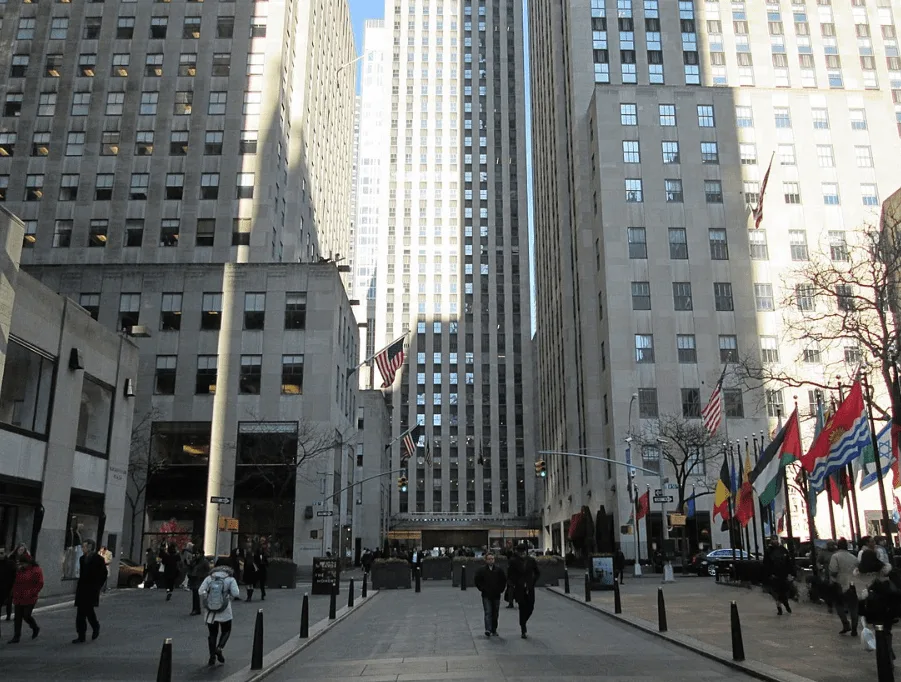
The Rockefeller Plaza is a pedestrian lane that runs right through the Rockefeller Center and runs Parallel with the 5th and 6th Avenues. It was named “Rockefeller Plaza” in 1933 and construction was completed in 1937.
Top of the Rock
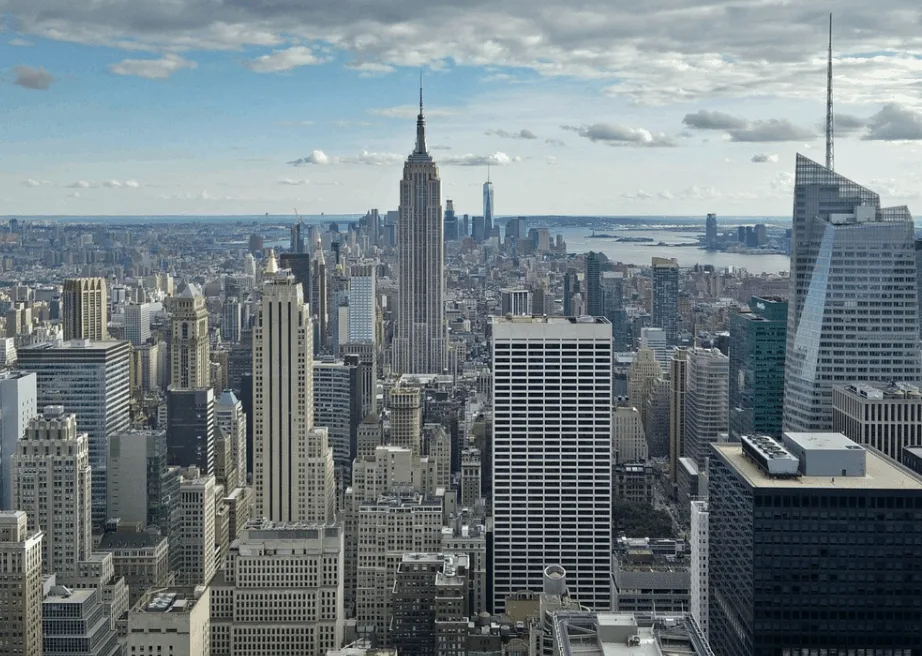
The Top of the Rock observation deck is located on the 70th floor of 30 Rockefeller Plaza. It gives visitors a 360-degree view of the city and offers amazing views of the Empire State and Chrysler buildings.
More interesting facts about Rockefeller Center
18. The botanical garden which used to be located where Rockefeller Center rose was called the Elgin Botanical Garden. The garden was named after the birthplace of the father of David Hosack, the owner of the garden. Elgin is a town in the northern part of Scotland.
19. One of the most interesting facts about Rockefeller Center is that the legacy of the Elgin Botanical Garden, which was an innovative concept in the early 19th century, survives in Rockefeller Center’s rooftop and Channel Gardens.
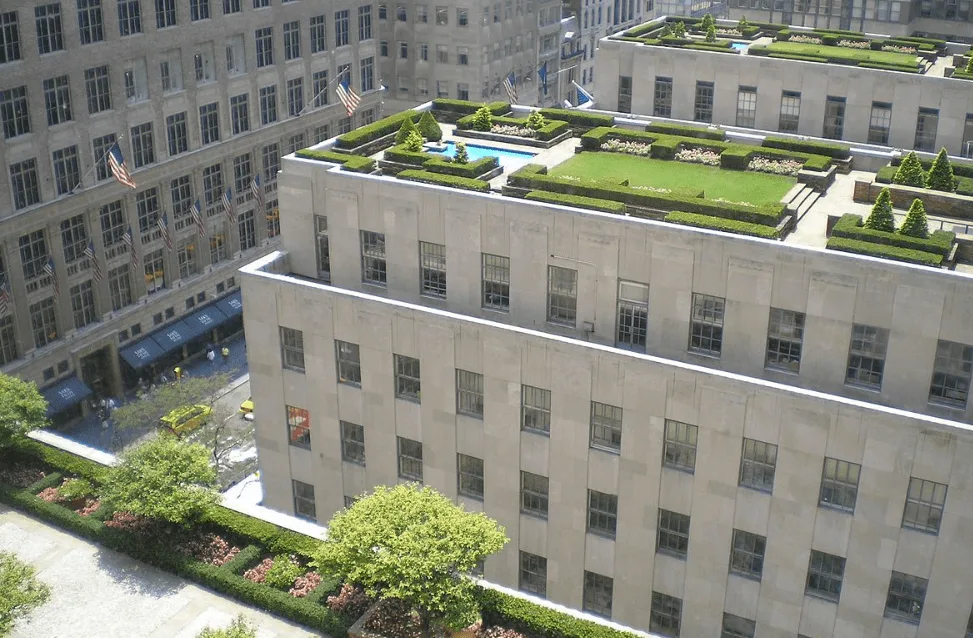
20. The total cost of the original plan, which included acquiring the land, demolishing some existing buildings, and constructing the new opera house, was estimated at $250 million.
21. The original company that was formed to overlook the construction of the Rockefeller, which was the precursor of Rockefeller Inc., was called the “Rockefeller Square Corporation.” This company was formed in December 1928, just before the stock market crash of 1929.
22. One of the original names given to the complex during the planning phase was “Metropolitan Square.” This was given after the name of the corporation that was formed for the project.
23. The architects responsible for the design of the buildings worked as “Associated Architects.” This means that the buildings can’t be attributed to a specific firm. The main project manager was John R. Todd and the principal architect was Raymond Hood. Other architects included Harvey Wiley Corbett, Wallace Harrison, L. Andrew Reinhard, and Henry Hofmeister.
24. The center occupies 22 acres (8.9 ha) in total and is bounded by the 5th avenue to the east, 6th avenue to the west, 48th Street to the south, and 51st Street to the north.
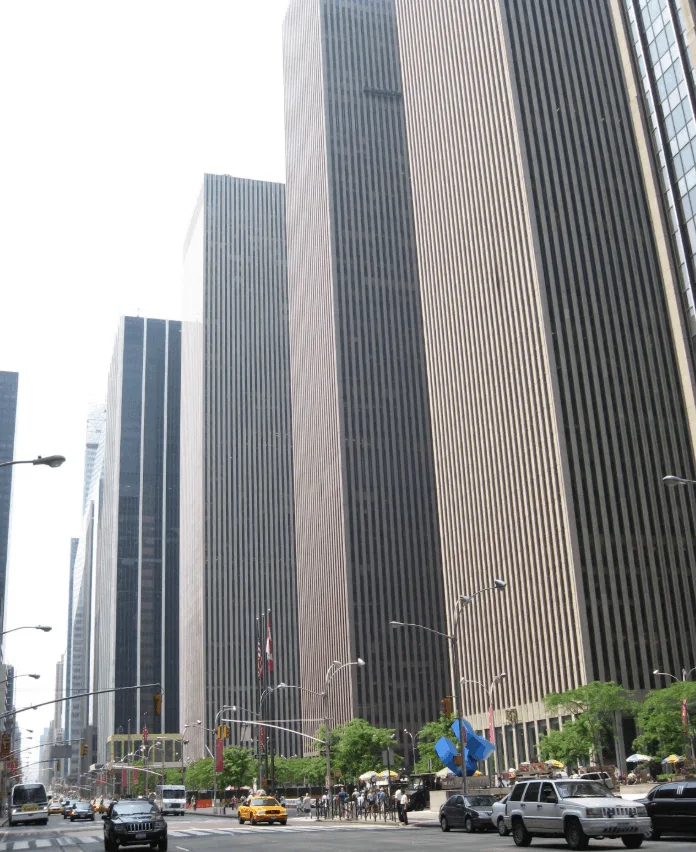
25. One of the main reasons that John D. Rockefeller Jr. was so eager to make a profit from the area is because he had invested heavily in stocks and lost huge amounts of money in the 1929 stock exchange crash.
26. The buildings were constructed in the typical art-deco style of that time, and the main building materials were Indiana Limestones. These are primarily quarried in south-central Indiana, USA, between the cities of Bloomington and Bedford. They are considered to be the highest quality type of limestone in the United States.
27. One of the most remarkable facts about Rockefeller Center is that the builders ordered an enormous amount of limestone during the Great Depression, the worst economic period the United States has ever known. A total of 14,000,000 cubic feet (400,000 cubic meters) of limestone was ordered in December 1931.

28. During World War II, German, Japanese, and Italian tenants’ rental contracts were denied and William Rhodes Davis, a tenant who shipped oil to Nazi Germany and fascist Italy, was denied a lease renewal in 1941.
29. John D. Rockefeller Jr. gave away ownership of Rockefeller Center to his sons the moment it started turning huge profits and after all the debt was paid off in the early 1950s.
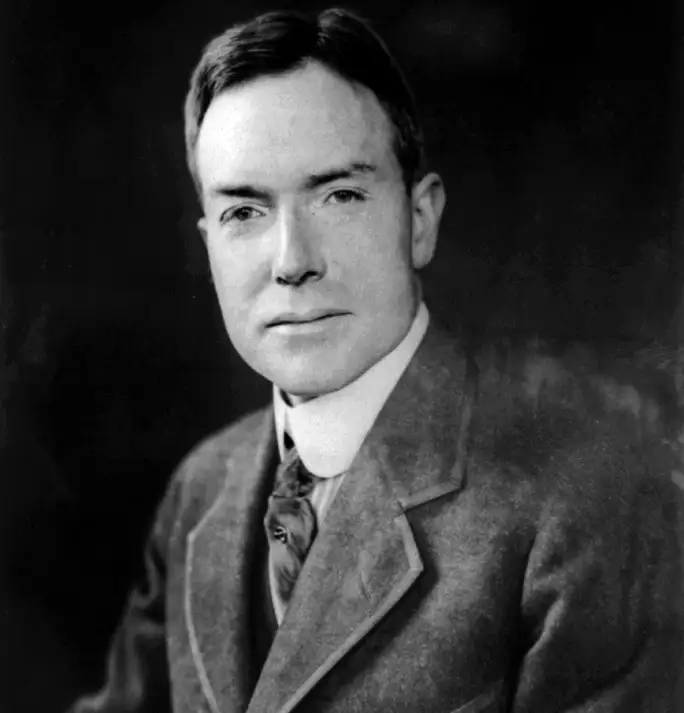
30. By its completion in 1947, what was then called the “Esso Building” and now called “75 Rockefeller Plaza,” was the tallest completely air-conditioned building in New York City.
31. The Rockefeller Center has always been popular amongst tenants and its office space has nearly always been completely rented out. In the 1970s however, only 85% was continuously rented out.
32. The first time the Christmas Tree was erected was in 1931. The first official lighting of the tree happened just 2 years later.
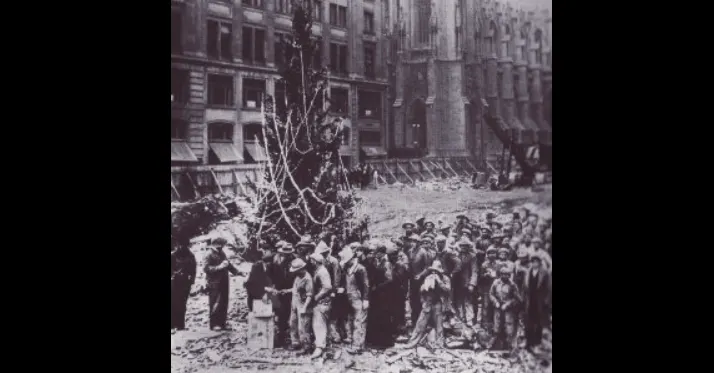
33. The final buildings of the Rockefeller Center were opened in the 1970s. By that time, Rockefeller Center contained 7% of Manhattan’s 250,000,000 square feet (23,000,000 sqm) of leasable office space. That’s truly remarkable in such an immense city!
34. The Rockefeller Center has been declared a New York City landmark in 1985 and a National Historic Landmark in 1987. A plaque has been put in the Rockefeller Plaza commemorating this achievement.


Leave a comment
You must be logged in to post a comment.